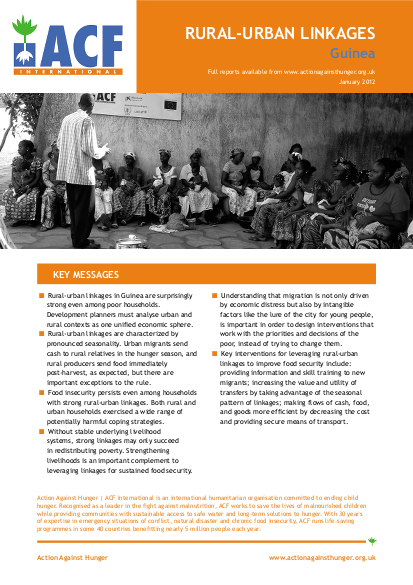
Guatemala is a middle low-income Central American country that, in 1996, signed the Peace Accords that officially put an end to a devastating 36 year long civil war. Half of Guatemala’s people are now considered to be below the poverty line, with 72% of this population estimated to be in the rural areas.¹ Despite overall food availability, Guatemala suffers the world’s fourth highest child chronic malnutrition rate − 49.9%.² Indeed, as figure 1 demonstrates,³ over 50% of rural Guatemalan children are stunted, compared to 30% of those coming from urban areas. This paper presents
results from research conducted in the municipal capital of Solola which is nestled at the heart of the country’s Western Highlands. Semi-structured interviews were administered to 50 respondents (24 rural, 26 urban residents) located at Solola’s well renowned market, while shorter interviews were held with an additional 27 respondents. The following briefing paper focuses on how the rural and urban realms of Guatemala interlink in Solola.4 These linkages and their influence on food security and nutrition are subsequently discussed along with their implications for policy makers.
Resource collections
- UN Habitat - Urban Response Collection
- Urban Response - Urban Crisis Preparedness and Risk Reduction
- Urban Response Collection - Community Engagement and Social Cohesion
- Urban Response Collection - Economic Recovery
- Urban Response Collection - Environment and Climate Change
- Urban Response Collection - Housing, Land and Property
- Urban Response Collection - Urban Crisis Response, Recovery and Reconstruction
- Urban Response Collection - Urban Resilience